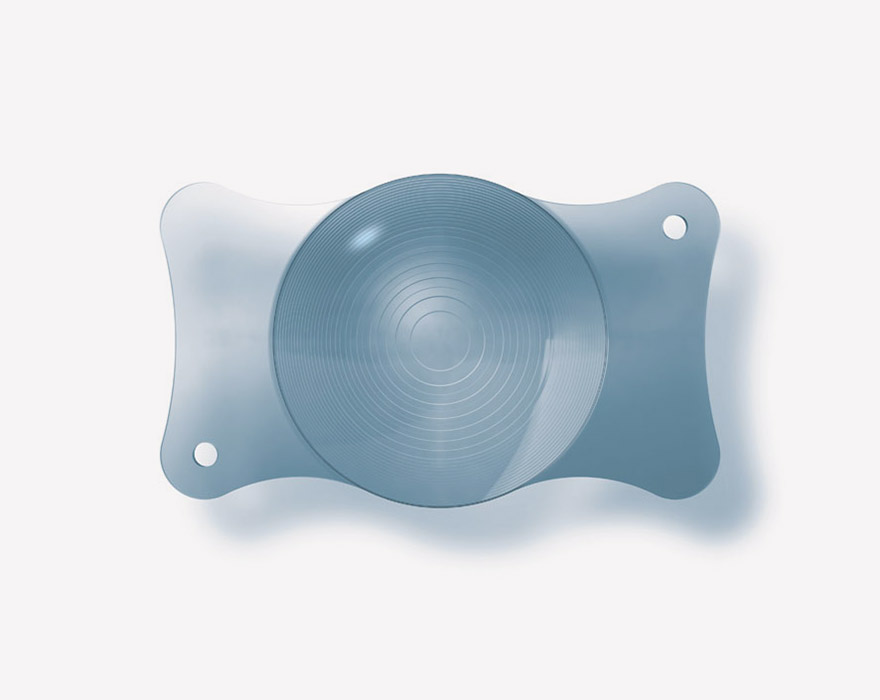With a thorough preliminary examination, we want to select an artificial lens with you that can deliver the best optical result.
For most people, the best possible optical correction can already be achieved with a so-called monofocal lens.
Special visual defects, for example a higher astigmatism or individual wishes, such as getting rid of glasses, can only be provided by lenses with additional optical benefits, so-called premium lenses.
Premium lenses are not always covered by the statutory health insurance companies. If a premium lens is the right therapy for you, we will of course inform you about the expected costs. We also recommend privately insured patients to consult their health insurance company in advance.



These lens types are currently available to us:
Monofocal lenses are covered by the statutory health insurance companies. With single vision lenses, your vision can be adjusted to a certain distance.
If the structure of the cornea is irregular, one speaks of astigmatism. This creates tilted images and a blurred view.
With the help of toric lenses, the farsightedness can be eliminated during the cataract operation. The other way of influencing corneal astigmatism is to make relief cuts at certain points in the cornea outside the central visual zone and thereby change the architecture of the cornea. However, the optical result is not as good as the compensation with toric lenses.
With toric lenses, the desired distance setting is specified before the operation.
This target value should be achieved as precisely as possible by exact calculation of the lens and corresponding positioning of the lens within the eye.
Toric lenses are not reimbursed by the statutory health insurance companies. The higher price of this lens and an increased medical effort must therefore be charged to the patient as a private additional service.
This yellow-colored intraocular lens protects the retina from the short-wave rays of the blue light spectrum. The short-wave blue light is more powerful than long-wave light and is considered to be a damaging factor in the development of macular degeneration.
An EDOF lens is a bifocal intraocular lens that has an enhanced depth of focus. This enables very good vision in the long and middle distance, i.e. kitchen counter, PC or car dashboard.
A reading visus is usually not possible unless you are suitable for a so-called blended vision concept. The interesting thing about this type of premium lens is that it has almost no side effects (glare, etc.) in the evening.
The multifocal lens allows vision in the distance and can partially or completely replace the ability of the eye to focus nearby, so that the glasses can be largely dispensed after the operation.
In the case of astigmatism, the benefits of a multifocal lens can be greatly reduced. To respond to this, toric multifocal lenses, which also compensate for astigmatism, are used for astigmatism from -1.25 cyl diopters.
90-95% of patients don’t need to wear glasses anymore thanks to the multifocal or toric-multifocal lenses. 5-10% of those operated on will continue to need visual aids for driving at night and reading long or very small texts.
Aspherical lenses have optical benefits if the pupil becomes larger under certain lighting conditions, for example when driving at night.
If you have already used an artificial lens and your glasses are now bothering you, a spherical, toric or multifocal piggyback lens can help. For this purpose, a further, very thin lens is placed in front of the existing artificial lens in order to compensate for existing blurs in the near or distant view.
We offer special lenses for selected patients with macular degeneration and in Munich we are the most experienced in this matter. This is done in close cooperation with our network of opticians and innovative lens companies. It may be possible for patients suffering from macular diseases who can no longer read to read again after a successful operation.
If the desired result has not yet been achieved by lens implantation, we can fine-tune it using a special laser process (excimer laser). Optical correction can be carried out using the so-called “bioptics method”.
